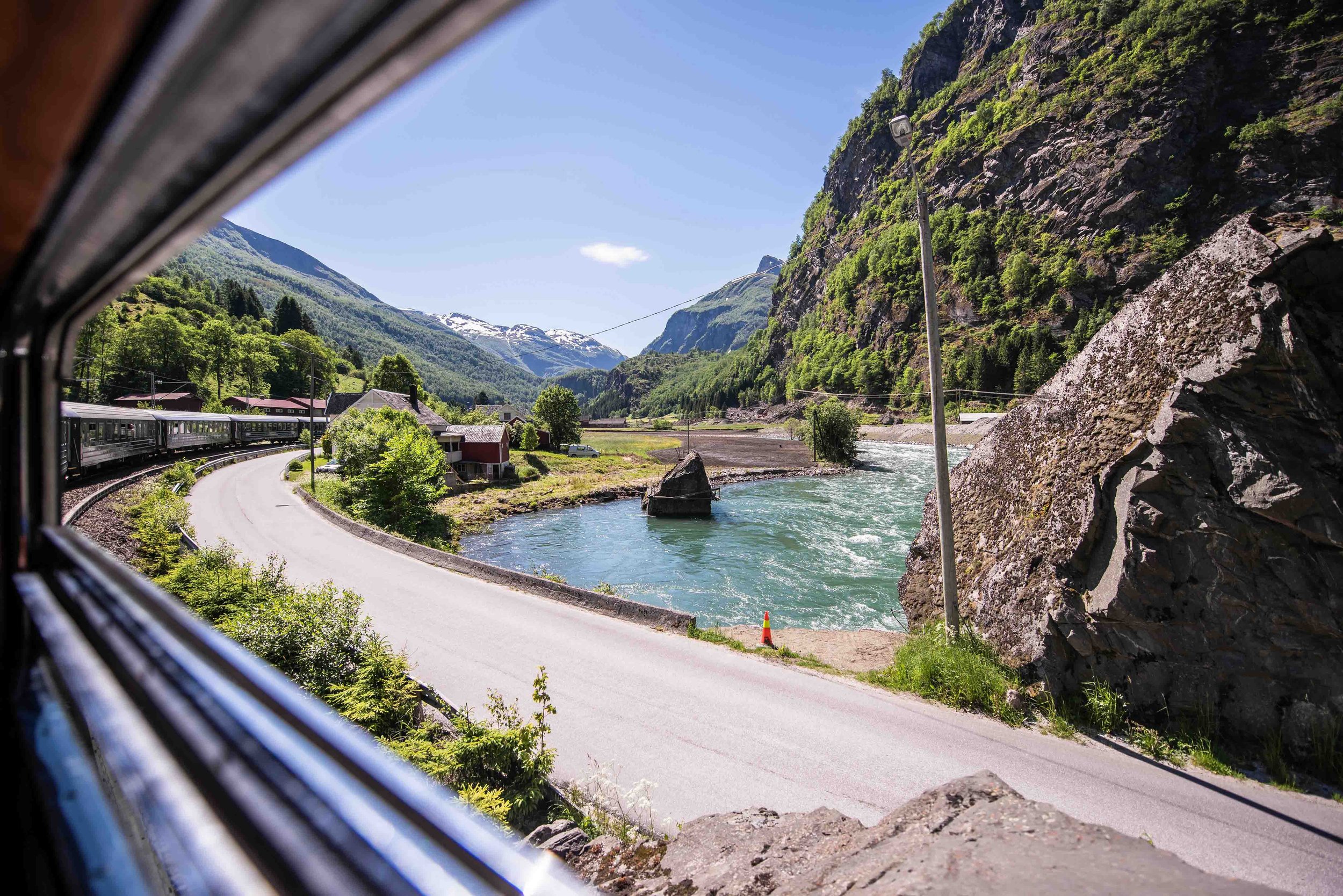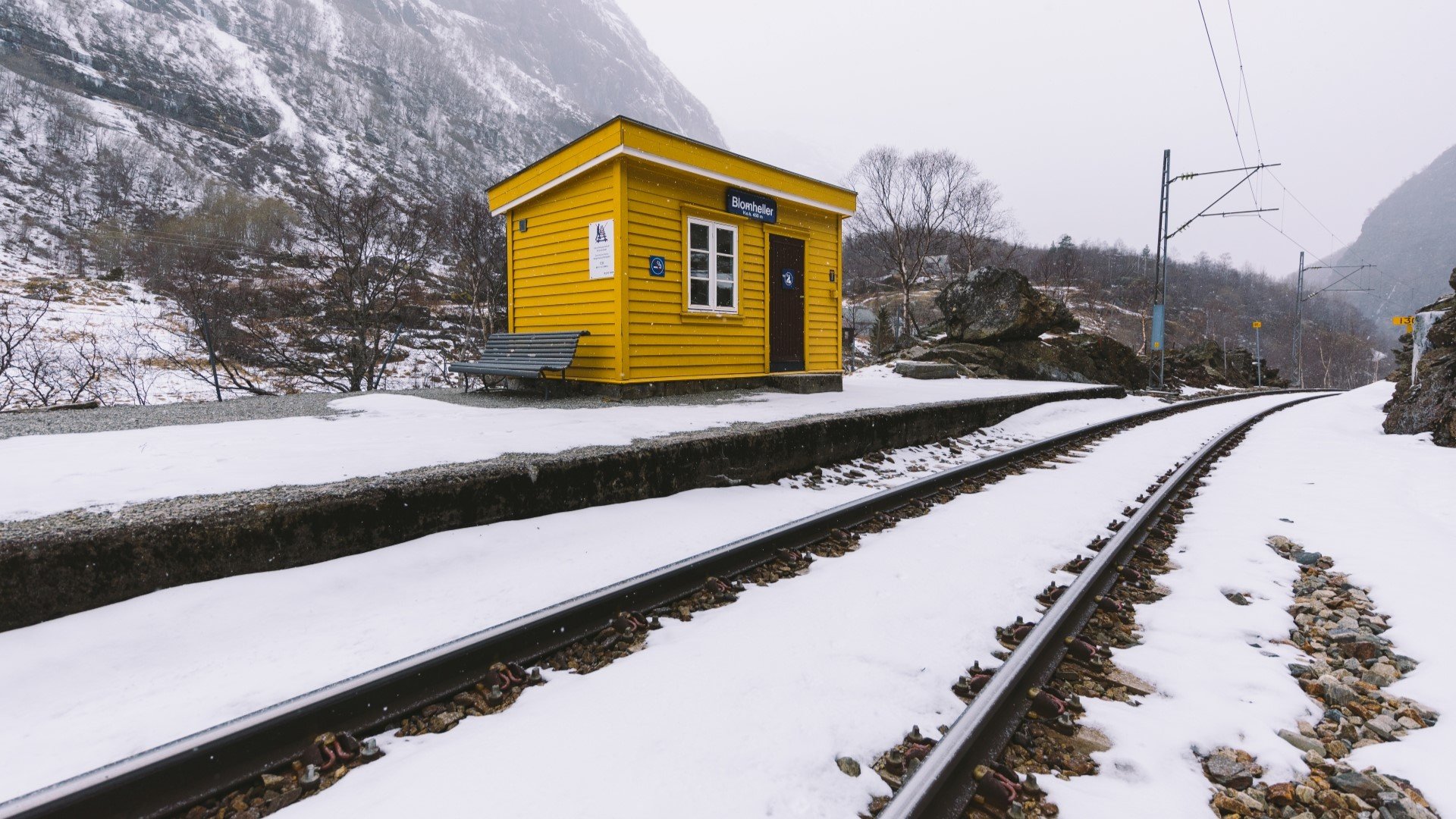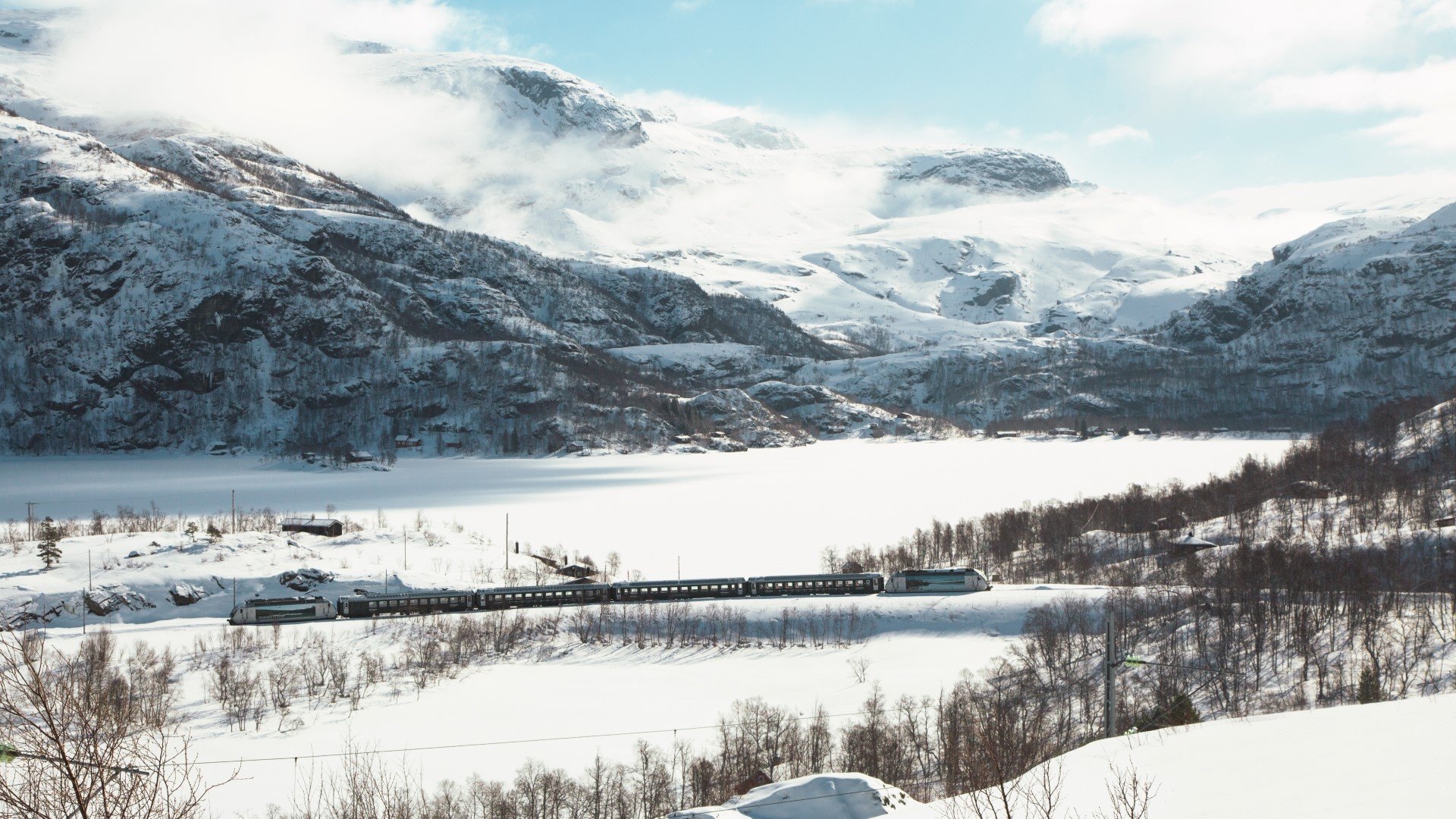Stations and stops

1. Flåm station
Flåm station is located at Fretheim by the Aurlandsfjord and was opened for temporary operation in 1940. The original station building is today preserved as part of the The Flåm Railway museum. The new station building was commissioned in 1992 and is located a short distance from the cruise port, port for scheduled boat traffic, bus stops, parking lots, shops, restaurants and hotels.
2. Lunden
The stop was opened in 1942 when The Flåm Railway was opened for ordinary passenger traffic. This is a typical stop for The Flåm Railway, with a short wooden platform and a small ticket office with a waiting room for passengers. Lunden is located close to the Flåmselva river, which runs alongside the railway line all the way from Kjosfossen and down the narrow The Flåm Valley.
3. Håreina
Håreina Haldeplass is located near Flåm, which has always been the center of the village and a church town. Flåm church was first mentioned in 1340, and it is likely that there was a stave church here at this time. The master builder, Magne Essen, was allowed to demolish the stave church to build a new church in Flåm. He built a new church, but it ended up at Fretheim by the fjord instead of Flåm. The new church was completed in 1668, but blew down in a storm the following year. Essen was told to rebuild it, but in the right place. Flåm church as we know it today was completed in 1670. At the side of the road by Flåm church there is a stone in memory of the poet Per Sivle. Per Sivle was born in Flåm and wrote poems with a clear political and national content.
Background photo: © Norway's Best / Sverre Hjørnevik

4. Berekvam station
Halfway on The Flåm Railway you will find Berekvam station. Here there is a train crossing and manual track change, so the traffic controller at the station has to make sure that the trains arrive on their respective tracks. When there is a train crossing at Berekvam, there is only boarding and alighting for one of the trains, as there is only a platform at one of the tracks.
5. Blomheller
Blomheller haldeplass is located 458 meters above sea level at the Melhus farm in The Flåm Valley. The halting place could not be named Melhus, because this name had already been taken by Melhus station on the Dovre Line.
6. Kjosfossen
Kjosfossen is one of the highlights of the Flåm Railway. The waterfall is one of Norway's most visited tourist attractions. The waterfall is 225 meters high and is divided into several cascades from Reinunga lake and down into the tunnel under the railway line.
The Flåm Railway passes at a perfect angle to the waterfall. When the water flow is high,
you can feel the water from the waterfall against your face. The stopping point was built in 1951 so that passengers could get off the train to see the waterfall. Kjosfossen power plant is also located here, which uses the water from the high mountain to power the Flåm Railway, and more.
Background photo: © Norway's Best / Chris Baldry

7. Reinunga
As the crow flies, the Kjosfossen and Reinunga stops are only 400 meters from each other, but the length of the railway between the stations is over 2 kilometers. From Reinunga to the next station, Vatnahalsen, the track is laid in a horseshoe-shaped loop for the same reason. The original name of the Reinunga station was Kjosfoss station. However, the stop had to be renamed when Kjosfossen halt was built.
8. Vatnahalsen stop
You will find Vatnahalsen Høgfjellshotell at this stop. The hotel has existed since 1896 and was probably the first hotel in the county to have electricity installed. In the 1930s, Easter tourism increased and the hotel had a reputation as a popular holiday resort. During the war, the hotel was occupied by the Germans, and during a party where someone was careless with the heat, the hotel burned to the ground. Construction of a new hotel began in 1953, and the following year a brand new Vatnahalsen Høgfjellshotell opened its doors.
Vatnahalsen has the longest zipline in the Nordic region down to the Kårdal farm in Flåmsdalen.
9. Myrdal station
The railway community Myrdal has been a hub at the Bergen Line for over 100 years, but there is no drivable road connection to Myrdal. The old construction road from Flåm, which was used when the Bergen Line was built (Rallarvegen), is only used as a footpath and cycle path. Myrdal station is located between two tunnels on the Bergen Line and is also the final station on The Flåm Railway. Most people who get off at this station need to change trains, but Myrdal is also a popular starting point for walking and cycling tours.
At Myrdal station, Cafe Rallaren is open during the summer. Outside the café's opening hours, snacks and refreshments are available from vending machines.
Background photo: © Norway's Best / Chris Baldry

